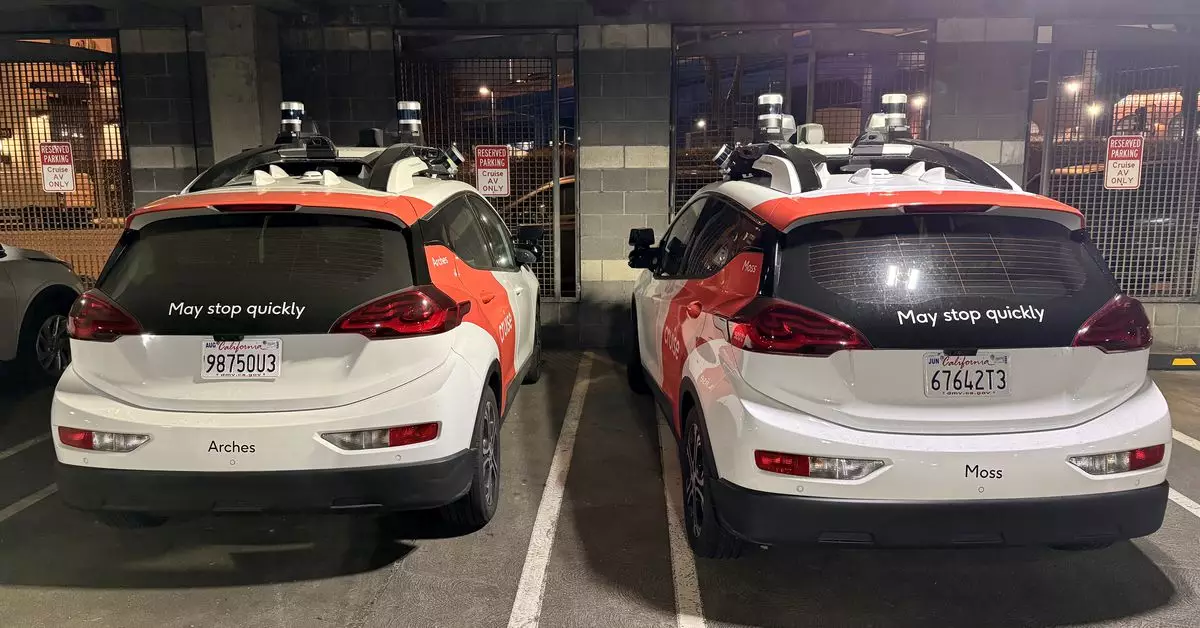Cruise, an ambitious venture under the General Motors (GM) umbrella, is currently undergoing significant challenges as it attempts to carve out a niche in the autonomous transport sector. Despite the promise that self-driving vehicles hold, Cruise has found itself mired in financial difficulties. With a reported loss of $435 million in the third quarter of 2024, the company paints a picture of struggle even amidst heightened consumer interest in electric and autonomous vehicles. This substantial monetary drain can be partially attributed to the suspension of most of its autonomous vehicle operations following a serious incident in late October 2023 that injured a pedestrian.
A deeper dive into Cruise’s financials reveals a complex reality. With total revenue for the third quarter amounting to only $26 million, juxtaposed against total expenses of $442 million, the operating income presents a stark reality of $417 million in losses. Although this marks an improvement from the staggering $791 million lost a year prior, it remains emblematic of a company struggling to balance innovation with financial prudence. The cumulative loss of $3.48 billion in 2023 alone raises eyebrows and concerns among investors, who may see Cruise as a burden weighing down GM’s financial health.
The catalyst for Cruise’s operational pause was a serious accident involving one of its autonomous vehicles. The vehicle collided with a pedestrian, dragging her over twenty feet and resulting in severe injuries. This incident spurred not just public outrage but also regulatory scrutiny. While Cruise has resumed certain tests with vehicles in states like Arizona and Texas, the uncertainty around when it will fully restart its commercial robotaxi service remains. The controversy surrounding such incidents exemplifies the risks tied to autonomous technology, highlighting how quickly consumer trust can be eroded.
As Cruise strives to stabilize its operations, GM CEO Mary Barra’s continued endorsement of the venture has come under intense scrutiny. While other automakers have scaled back their investment in autonomous technology due to a lack of immediate returns, Barra has demonstrated a commitment to persist with Cruise. This commitment is evident in her decision to reorganize the company, including replacing founding team members with seasoned professionals from both the auto and tech industries. While some may view this as a necessary purging of outdated approaches, others fear that such drastic changes may undermine the innovative spirit that initially fueled Cruise’s ambitions.
In response to financial pressures, Cruise has adopted a series of cost-cutting measures aimed at reassurance for wary investors. This includes a significant reduction in its workforce by 25 percent and the cancellation of ambitious projects like the Origin driverless shuttle, which resulted in a hefty $534 million loss. Despite these setbacks, Barra maintains a disciplined investment approach, suggesting that losses in 2025 will be limited to no more than $2 billion. Such promises indicate a cautious optimism, yet many may question whether this approach can yield meaningful improvements.
Looking ahead, Cruise’s outlook hinges on its ability to develop a sustainable funding model. As Barra hinted at a forthcoming announcement regarding potential partnerships that could help dilute operational costs, stakeholders are eager to see how these collaborations might transform Cruise’s financial landscape. The reality remains that innovation in the driverless vehicle space is costly, and Cruise isn’t alone in facing these challenges. Even more established players like Waymo haven’t achieved profitability despite substantial backing and years of development.
The future of Cruise embodies the tumultuous journey faced by many companies daring enough to tread the untested waters of autonomous technology. While the decline in financial losses provides a glimmer of hope, serious questions about leadership decisions, operational mishaps, and the foundational vision remain. As the industry evolves, so too must Cruise, adapting to the realities of an uncertain market while striving to restore public confidence and investor faith. The road ahead presents both formidable obstacles and potentially transformative opportunities that could dictate whether Cruise emerges as a leader in the autonomous vehicle revolution or fades into the background.


Leave a Reply